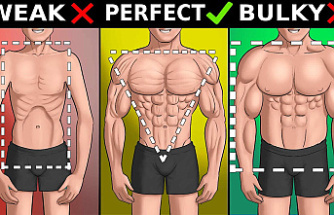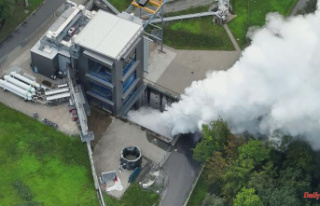The flow of life moves at a relentless speed in New York City's crowded streets. A quiet fight persists among the never-ending scurry – the problem of managing chronic pain in an urban setting. The search for appropriate pain management is as continuous for many New Yorkers as the city's pulse. This article goes into the novel techniques and approaches used by pain treatment clinics in New York City to fight this widespread problem.
The Unique Pain Management Challenges in New York City
The fast-paced lifestyle of New York City creates distinct obstacles for anyone suffering from chronic pain. Constant mobility and stress, along with the urban environment, can aggravate pain issues. Furthermore, because of the city's population density and variety, pain treatment must be as diverse and dynamic as the city itself.
Dr. Henry Sardar, a specialist in advanced pain treatment at BayWayPain Clinic in Brooklyn, stresses the need for a multifaceted approach. "In New York, you meet people from all walks of life, each with their own pain story." "It's critical that we tailor our treatments to meet these diverse needs while keeping in mind the fast-paced lifestyle that is typical of this city," he says.
Innovative Pain Relief Methods
New York’s pain management doctors and clinics are at the forefront of combining novel procedures with conventional therapy. Dr. Sardar and his colleagues, for example, use cutting-edge therapies such as Electromagnetic Transduction Therapy (EMTT) and Platelet-Rich Plasma (PRP) Therapy. These solutions provide non-invasive, drug-free options to an increasingly apprehensive community of opioid users.
Another noteworthy strategy is the employment of technology-enhanced therapy. Clinics now have enhanced diagnostic techniques for pinpointing pain, considerably boosting therapy results. "We're living in an era where technology can greatly enhance our understanding and treatment of pain," Dr. Sardar said.
Personalized Care in a Diverse City
The varied population of New York City needs tailored pain management regimens. Clinics are shifting away from a one-size-fits-all strategy and toward individualized therapy that meets each patient's unique lifestyle and pain profile. This move is about more than simply pain relief; it is also about increasing overall quality of life.
At BayWayPain Clinic, for example, the staff collaborates extensively with patients to understand their daily routines, employment needs, and personal aspirations. This information is critical in establishing a treatment plan that integrates effortlessly into the patient's lifestyle, guaranteeing effectiveness as well as adherence.
Holistic and Integrative Therapies' Role
Holistic and integrative treatments are also being used in pain management clinics in New York City. Acupuncture, yoga, and meditation are being used in conjunction with established medical therapies. This holistic approach acknowledges the deep relationship between mind and body, particularly in pain perception and treatment.
Education is critical in pain treatment. Clinics are increasingly emphasizing patient education to ensure that patients understand their diseases and the reasoning behind treatment regimens. Pain treatment programs are increasingly including support groups and counseling services to provide emotional and psychological assistance.
The Future of Pain Management in New York City
The future of pain treatment in New York City is bright. Clinics are well-equipped to handle the changing demands of the city's people, thanks to continuing research and the constant introduction of novel medicines. The mission remains the same: to deliver effective, tailored, and compassionate pain management solutions to New Yorkers.
"In a city that never sleeps, we strive to ensure that pain does not become a defining part of anyone's life," Dr. Sardar says plainly. Our objective is to empower our patients by guiding them through their pain management journey using the greatest tools and assistance available."
The Relationship Between Urban Living and Pain Management
The metropolitan location of New York adds greatly to the sorts of pain concerns faced. Long commutes, desk employment, and the physically demanding nature of many industries all contribute to a variety of musculoskeletal issues. "We see a high incidence of lower back pain, neck strain, and repetitive stress injuries," says Dr. Sardar. To address these urban lifestyle-induced illnesses, our therapeutic procedures must be strong and adaptable."
Another pillar of current pain treatment in NYC is technology. Technology is transforming patient care, from telemedicine consultations for the city's time-pressed populace to improved imaging procedures and computerized pain assessment tools. It's not just about convenience; it's about bringing pain treatment to more individuals by breaking down temporal and geographical boundaries.
The greatest pain treatment clinics in NYC, such as BayWayPain, are distinguished by interdisciplinary teams. Pain management experts, physical therapists, acupuncturists, and mental health professionals comprise these teams, providing a complete approach to pain care. This partnership reinforces the concept that successful pain management frequently requires more than just physical therapy; it necessitates treating the psychological components of pain as well.
Clinics are increasingly emphasizing community outreach, knowing that education is an effective weapon in the battle against chronic pain. Pain treatment workshops, seminars, and informative resources are becoming more widely accessible to the general population. These programs strive to debunk myths about pain management and enable people to seek timely and appropriate treatment.
Patient input is increasingly important in developing the services provided by pain management clinics. In an age where the patient experience is everything, clinics are actively seeking and using input to improve their services. In a city as varied as New York, where patient needs and expectations may differ greatly, this patient-centric approach is critical.
The Future of Pain Management in New York
Looking forward, the trend in pain treatment in New York City is toward more individualized, technologically enhanced, and patient-centered care. The future seems positive for people seeking pain relief, with an increased focus on non-invasive therapies and a holistic perspective of the patient.
BayWayPain clinics are at the vanguard of this growth, always growing and adapting to suit the requirements of New Yorkers. "Our goal is not just to alleviate pain, but to improve overall well-being," Dr. Sardar says. We are dedicated to developing therapies that complement our patients' lifestyles and specific health objectives, guaranteeing that life in this lively metropolis may be experienced to the fullest, free of pain limits."
As New York City progresses, its pain treatment clinics serve as key allies to its residents, providing hope and respite in the face of agony and ensuring that the city's pulse remains pulsing with energy and power.












